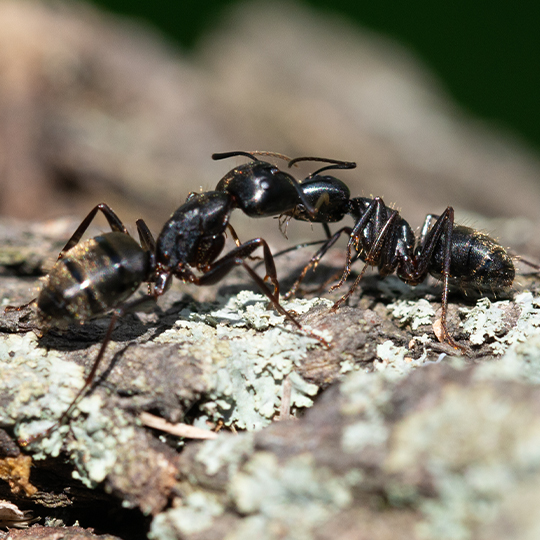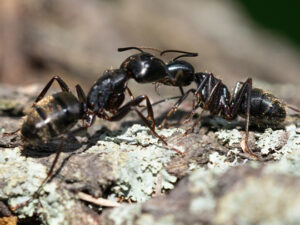
Ants are fascinating creatures, often admired for their industrious nature and complex social structures. However, finding them marching through your kitchen or living room is far less charming. If you’ve noticed a few tiny visitors around your home, it might be time to investigate. This blog will help you identify the signs of an ant infestation, understand why they invade homes, and offer practical tips to evict these unwelcome guests.
The Unseen Guests in Your Home
Many homeowners are unaware of an ant problem until it becomes severe. Ants are adept at staying hidden while they build their colonies and forage for food. But knowing what to look for can help you catch an infestation early.
Frequent Ant Sightings
One of the simplest and most obvious signs that you have an ant problem is seeing ants frequently. Spotting a few ants here and there might seem harmless, but it often indicates a larger population nearby.
If you observe ants regularly, especially in places like the kitchen or pantry, it’s a strong indicator that they’ve established a nest nearby. Remember, ants are social insects, so where there’s one ant, there are likely many more.
Trails of Ants
Ant trails are a classic sign of an ant infestation. Ants leave a pheromone trail as they move, which helps other ants from their colony follow the same path to food sources. This behavior results in visible lines of ants moving back and forth.
If you spot a trail, follow it. The trail can often lead you to the colony’s nest or the entry point they’re using to get into your home. Understanding the entry points can be crucial in effectively dealing with the infestation.
Piles of Soil or Wood Shavings
Certain species of ants, like carpenter ants, can be particularly destructive. They burrow into wood to build their nests, which can cause structural damage to your home. If you notice small piles of sawdust-like material, it may be a sign of carpenter ants.
Similarly, ants that nest in soil may leave small mounds of dirt around your home’s foundation, in garden beds, or near entry points. These nests can expand rapidly, so early detection is key to preventing a larger issue.
The Sounds of Trouble
While ants are mostly silent invaders, there are situations where you might hear them.
Rustling Noises in Walls
Believe it or not, some ant species can be noisy. Carpenter ants, for instance, make a rustling sound as they burrow through wood. This noise is often faint and might be more noticeable at night when your home is quiet.
To check for these sounds, place your ear close to the walls where you suspect activity. If you hear a faint rustling, it’s time to investigate further.
Clicking Sounds
Another sound to be aware of is a quiet clicking noise. Some ants communicate by tapping their bodies against surfaces, creating a clicking sound. This is more common in large colonies and can sometimes be heard if you’re close to the nest.
Activity Around Food
Ants are constantly on the hunt for food. If you find ants swarming around pet food dishes, crumbs on the floor, or even inside food containers, it’s a clear sign of an infestation.
Frequent Visits to Water Sources
Ants need water to survive, so they’re often found near sinks, bathrooms, and other water sources. If you notice ants congregating around these areas, it could indicate that they’re using your home as a hydration station.
Unexpected Discoveries
Sometimes, ants can leave behind physical evidence of their presence.
Dead Ants
Finding dead ants around your home, especially near windowsills, doors, or other entry points, suggests that a colony is nearby. Dead ants can accumulate in significant numbers if there’s an infestation.
Wings
Some ants, like termites, have wings. These winged ants are typically reproductive males and females that leave the colony to start new ones. Finding discarded wings near windows or doors can indicate the presence of a colony.
Nests
While some ants build their nests underground or inside walls, others create visible nests. These nests can look like small piles of soil or debris and are usually found in hidden or protected areas.
Environmental Clues
Your home environment can also provide clues about an ant problem.
Warm Weather
Ants are more active during warmer months. If you notice an increase in ant sightings during spring and summer, it’s likely because they’re more active and foraging for food.
Rainy Season
Heavy rainfall can drive ants indoors in search of dry shelter. If you see more ants during or after significant rain, this might be the reason.
Proximity to Vegetation
Homes surrounded by dense vegetation or located near wooded areas are more susceptible to ant infestations. Ants use plants and trees as highways to enter your home.
Preventive Measures
Prevention is always better than cure. Here are some steps to keep ants at bay:
Cleanliness
Keeping your home clean and free of food crumbs is one of the most effective ways to prevent ants. Regularly vacuum and wipe down surfaces, and store food in airtight containers.
Sealing Entry Points
Inspect your home for cracks and gaps that ants could use to enter. Seal these entry points with caulk or other appropriate materials.
Eliminate Water Sources
Fix leaky pipes and ensure that water doesn’t accumulate in sinks or other areas. Reducing moisture can make your home less appealing to ants.
Natural Remedies
If you prefer natural methods to deal with ants, here are some options:
Vinegar
Mix equal parts vinegar and water in a spray bottle and use it to clean surfaces. The strong smell of vinegar disrupts ant trails and deters them from returning.
Essential Oils
Certain essential oils, like peppermint or tea tree oil, are natural ant repellents. Mix a few drops with water and spray around entry points and affected areas.
Diatomaceous Earth
This natural powder can be sprinkled around entry points and along ant trails. It’s safe for humans and pets but lethal to ants.
When to Call a Professional
Sometimes, an ant problem can be too severe to handle on your own. If you’ve tried multiple methods and still see signs of ants, it might be time to call a professional pest control service.
Persistent Infestations
If ants keep coming back despite your efforts, a professional can identify and eliminate the colony effectively.
Structural Damage
If you suspect carpenter ants or notice damage to wood structures in your home, it’s crucial to get professional help to prevent further damage.
Health Concerns
Some ant species can bite or sting, posing a health risk to you and your family. Professional exterminators can handle these more dangerous infestations safely.
Understanding the signs of an ant problem can help you take early action and prevent a minor inconvenience from turning into a major issue. By keeping your home clean, sealing entry points, and using natural remedies, you can keep ants at bay. And if all else fails, don’t hesitate to seek professional help to protect your home and family.
Ant problems can be sneaky, but with vigilance and the right strategies, you can keep your home ant-free. Stay proactive, and remember that early detection is the key to preventing a full-blown infestation. Happy ant hunting!










